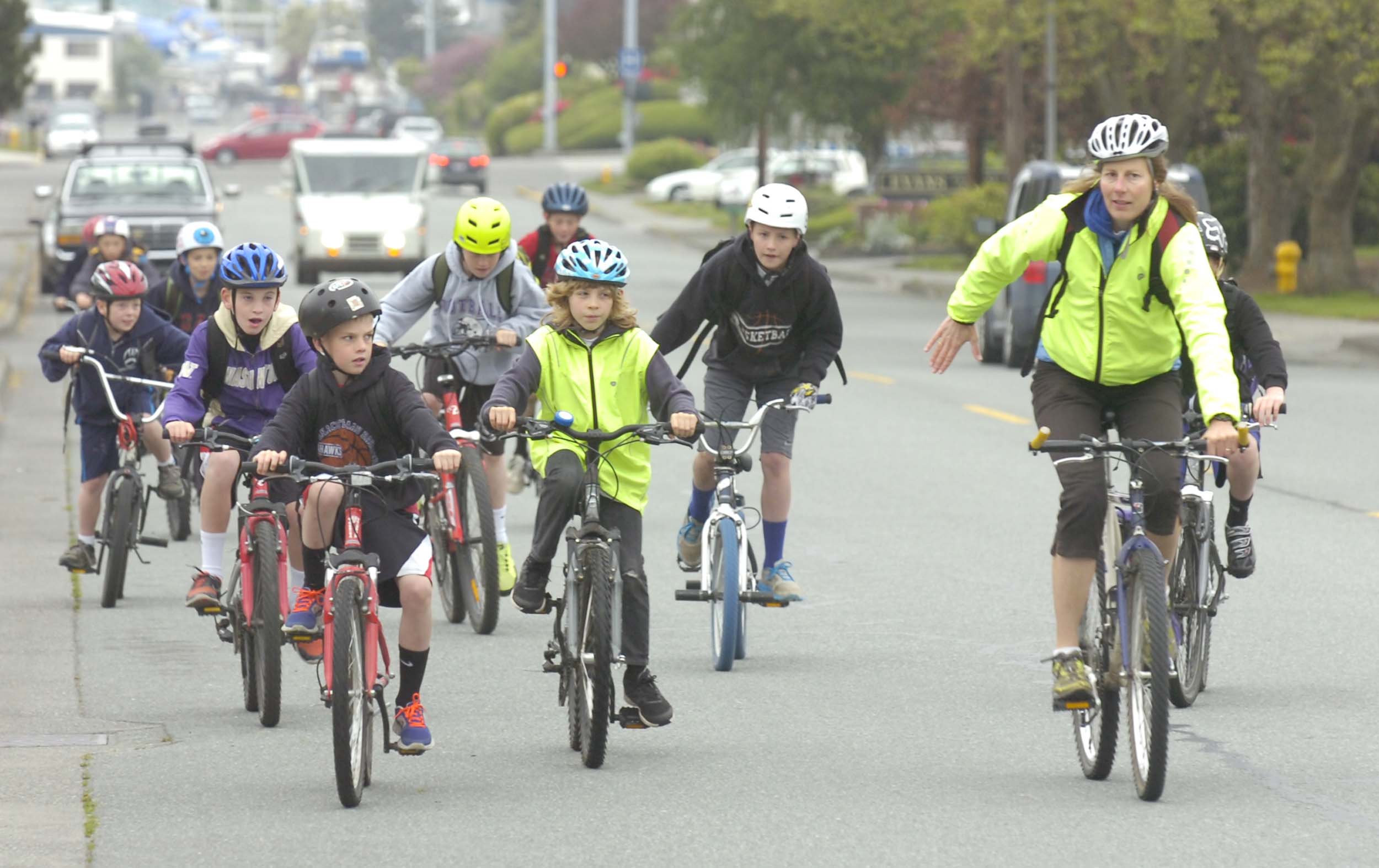Safe Routes to School:
Safe Routes to School is a US Department of Transportation (DOT) funding source encouraging youth in kindergarten through eighth grade, including those with disabilities, to safely walk or ride bikes to school. Safe Routes to School (SRTS) programs use the framework of the 5 Es.
> Evaluation – e.g. surveys to measure student & parent  transportation choices
transportation choices
> Education – e.g. bike rodeos or in-class activities on bike safety
> Encouragement – e.g. starting a walking school bus or rolling bike train
> Enforcement – e.g. installing a radar speed sign to try to slow traffic
> Engineering – e.g. physical improvements such as sidewalk repairs
Visit the NH DOT’s SRTS Getting Started page for some useful tools and guidance relating to the program. Or contact Southwest Region Planning Commission for more information on the program at 357-0557.
For more information on starting a SRTS program check out US DOT’s Safe Streets Toolkit and Promotion Toolkit
Safe Routes to School Tools:
In Class Survey: Students Arrival and Departure Tally Sheet This form will help measure how students get to school. Teachers can use this form to record specific information about how children arrive and depart from school each day for a week.
Parent Survey about Walking and Biking to School This survey asks parents for information about what factors affect whether they will allow their children to walk or bike to school.
How walkable or bikeable is your community? To find out have your students complete a walkability and bikeability audit. Walkability Checklist Bikeability Checklist
Junior Solar Sprint / Hydrogen Fuel Cell Car
For the past three years the Harris Center for Conservation has facilitated the U.S. Department of Energy’s Junior Solar Sprint/Hydrogen Fuel Cell (JSS/HFC) Car Competitions for the Monadnock region. Middle School teams from across the region are invited to participate in this fun, educational and exciting event.
Teams work together to build solar and/or hydrogen fuel cell cars with guidance from a parent or teacher coach to compete in race and design categories. The competition helps improve students’ understanding of scientific concepts and renewable energy technologies; and generates enthusiasm for science, technology, engineering and math (STEM) skills.
For more information on this competition visit the Northeast Sustainable Energy Association’s website: http://www.nesea.org/k-12/juniorsolarsprint
Cool School Challenge
Conceptually modeled after the U.S. Mayor’s Climate Protection Agreement, the Cool School Challenge aims to motivate students, teachers, and school districts to reduce carbon dioxide and other greenhouse gas emissions schoolwide. At the heart of the Cool School Challenge is the philosophy that big changes start with small steps, and that taken together, simple individual actions create a world of difference.
With the guidance of a “Challenge Coach,” student teams will learn how to conduct a classroom energy audit and identify major sources of CO2 emissions and opportunities for shrinking them. They will then recruit as many classrooms as possible into the Challenge, helping them measure their CO2 emissions, setting a CO2 reduction goal and then developing an action plan for achieving that goal.
To learn more about the Cool School Challenge visit:www.coolschoolchallenge.org